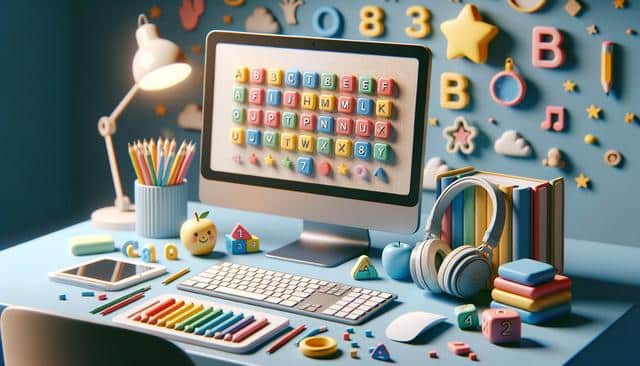
Engaging Virtual Preschool Activities to Support Early Learning
Understanding the Benefits of Virtual Learning for Preschoolers
Virtual preschool activities have become an increasingly popular way to introduce young children to structured learning in a flexible and accessible environment. These activities can be particularly helpful for parents who want to supplement traditional learning or for those who homeschool their children. By engaging in well-designed virtual experiences, preschoolers can develop essential cognitive, emotional, and social skills. This learning format also allows children to explore educational content at their own pace, which can help strengthen their confidence and independence.
One of the key benefits of virtual preschool learning is the ability to incorporate multimedia elements such as videos, songs, and interactive games. These tools help maintain a child’s attention and enhance the learning experience. In addition, caregivers can choose activities that align with their child’s interests, creating a more personalized and enjoyable learning path. Whether it’s learning numbers through animated counting songs or exploring nature through virtual storybooks, the possibilities are wide-ranging and flexible.
Building a Daily Routine with Virtual Activities
Establishing a consistent daily schedule is important for preschoolers, even in a virtual setting. A predictable routine helps children feel secure and ready to learn. Virtual preschool activities can be structured into a daily plan that includes time for learning, play, and rest. Parents and caregivers can organize activities by theme or subject, such as literacy, math, or creative arts, helping children experience a well-rounded curriculum.
Here’s an example of a balanced virtual preschool day:
- Morning circle time with songs and greetings
- Short storytime or alphabet learning video
- Interactive math games involving shapes or counting
- Creative arts session like drawing or crafting
- Movement break with dance or yoga videos
- Closing activity, such as a review or goodbye song
Incorporating breaks and physical movement is essential to keep young learners engaged. Virtual learning doesn’t mean sitting still all day—instead, it can be a dynamic mix of screen-based and offline activities that stimulate both the mind and body.
Creative Arts and Expression Through the Screen
One of the most enriching aspects of preschool education is creativity. Virtual preschool activities can include art projects, music sessions, and imaginative play, all of which contribute to a child’s emotional and cognitive development. Children can follow along with guided drawing lessons, explore colors through digital painting apps, or create their own stories using virtual storytelling tools.
Music and movement are also vital components of creative expression. Preschoolers can participate in sing-alongs, rhythm games, and even beginner dance lessons. These activities are not only enjoyable but also support language development and coordination. Many virtual programs offer downloadable printables for art projects, allowing children to work with their hands after watching an instructional video. This balance of digital and tactile learning reinforces key skills in a fun and interactive way.
Parents can further encourage creativity by setting up a mini art station at home with basic materials like crayons, paper, glue, and child-safe scissors. By combining online prompts with real-world materials, children get a more tangible and engaging experience.
Socialization in a Virtual Setting
One common concern with virtual preschool is the lack of in-person interaction. However, many platforms now offer group sessions where children can see and talk to peers through video calls. These sessions often include group storytelling, show-and-tell activities, and collaborative games that promote social development and communication skills.
Participating in virtual playdates or small group lessons helps children practice important social behaviors, such as taking turns, listening, and expressing themselves clearly. Teachers or facilitators can encourage participation and guide interactions to ensure a positive and respectful environment. Some virtual classrooms also integrate role-playing games or puppet shows that allow children to explore different emotions and scenarios in a safe, controlled setting.
While virtual interactions can’t fully replace in-person play, they can still provide meaningful opportunities for connection. Parents can encourage their child to share their thoughts during group activities and praise their efforts to communicate, helping build confidence and social awareness.
Tips for Parents and Caregivers Supporting Virtual Learning
Supporting a preschooler in a virtual learning environment requires a thoughtful approach and active involvement. While the activities themselves are designed for young learners, adult guidance is often necessary to ensure proper engagement and understanding. Parents and caregivers can enhance the virtual learning experience by creating a dedicated learning space that is quiet, comfortable, and free from distractions.
Here are a few practical tips for caregivers:
- Be present during virtual sessions to assist and encourage participation
- Limit session lengths to match a child’s attention span (typically 15–30 minutes)
- Use visual schedules or charts to help children know what to expect
- Provide positive reinforcement and celebrate small achievements
- Balance screen time with plenty of offline play and exploration
It’s also helpful to stay in touch with educators or program facilitators to track progress and get advice on adapting activities to the child’s needs. Flexibility is key, and parents should feel empowered to adjust routines and activities based on what works best for their child. Ultimately, the goal is to create a joyful and supportive environment where young learners can thrive.
Conclusion: Making the Most of Virtual Preschool
Virtual preschool activities offer a valuable way to support early learning and development in a home-based setting. With a blend of educational games, creative projects, and social interaction, children can enjoy a well-rounded experience that nurtures their curiosity and growth. For parents and caregivers, participating in the process and creating a structured yet flexible environment is key to making virtual learning effective and enjoyable. By taking advantage of the many resources available online, families can create a rich and meaningful early learning journey—right from their own living room.